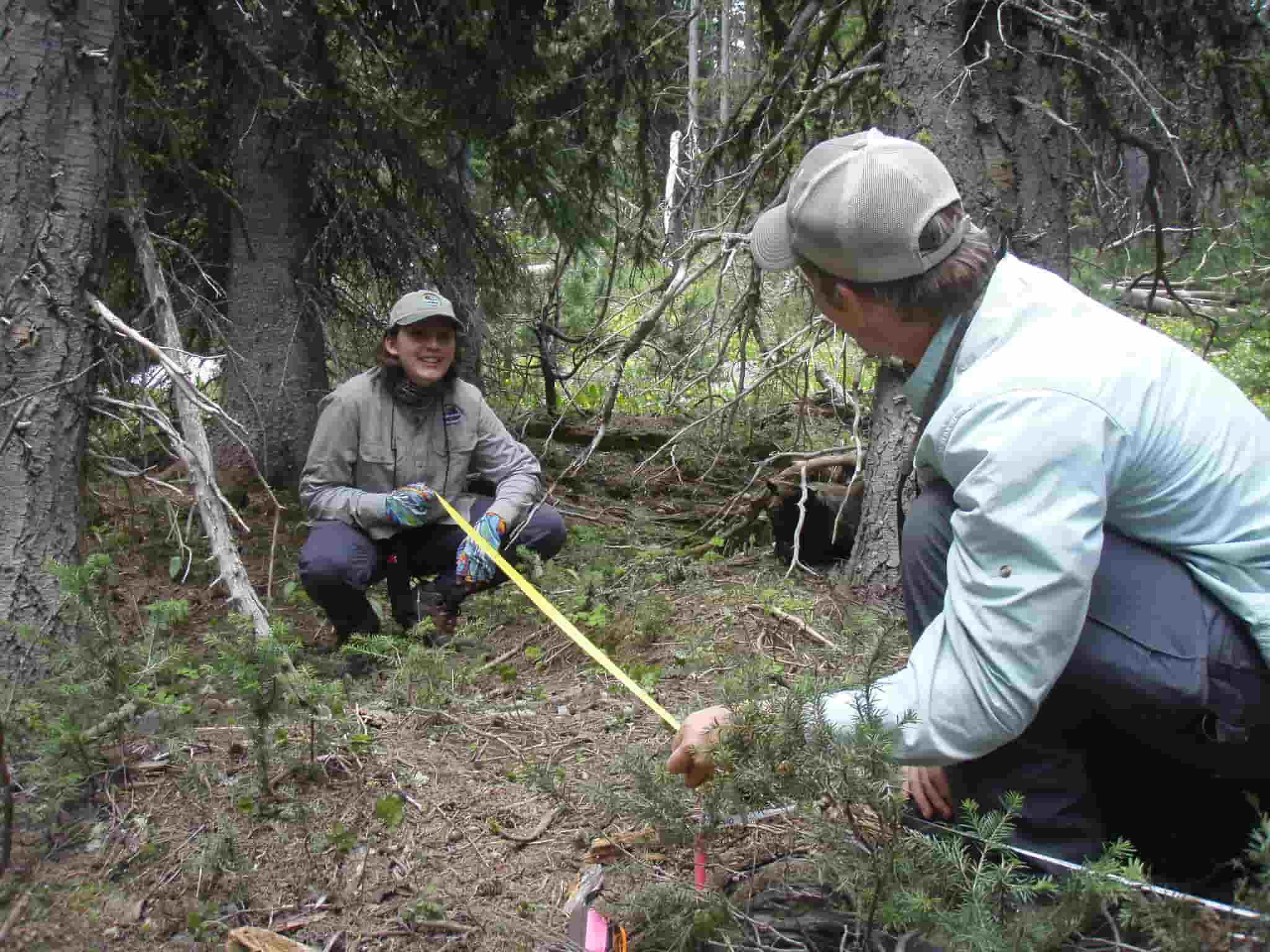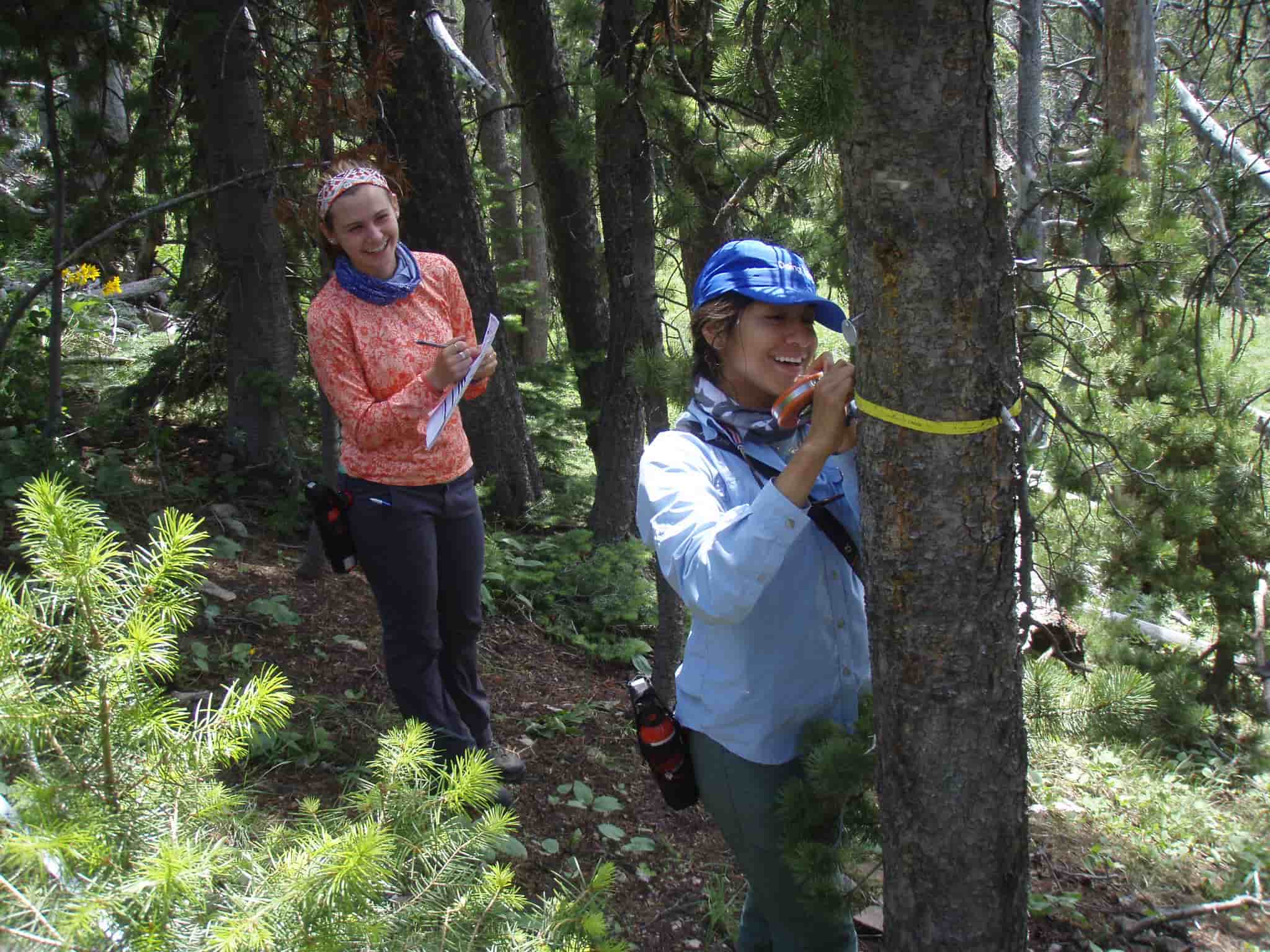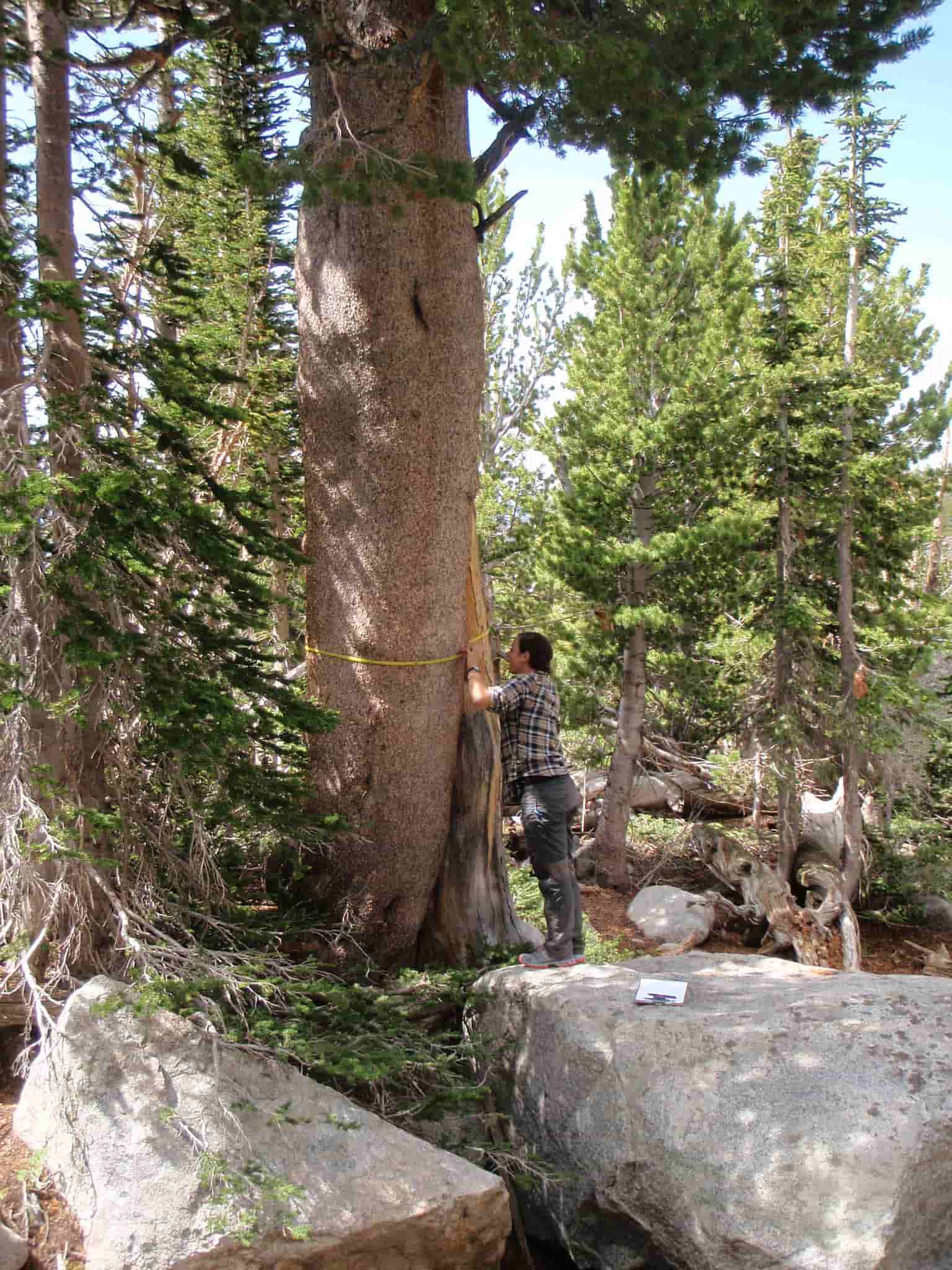Author: Erin K. Shanahan
Organization: Greater Yellowstone Inventory and Monitoring Network, National Park Service
Title: Encouraging Stronger Youth Engagement in the Plight of Whitebark Pine in the Greater Yellowstone Ecosystem
Whitebark pine (Pinus albicaulis) occur in high-elevation forests across western North America. In the Greater Yellowstone Ecosystem (GYE), this slow-growing, long-lived conifer exerts considerable influences on critical ecosystem functions in subalpine environments. However, in the past few decades, significant population declines of this iconic species have been documented throughout its range. Losses are attributed to multiple biotic and abiotic agents all strongly influenced by climate change.
across western North America. In the Greater Yellowstone Ecosystem (GYE), this slow-growing, long-lived conifer exerts considerable influences on critical ecosystem functions in subalpine environments. However, in the past few decades, significant population declines of this iconic species have been documented throughout its range. Losses are attributed to multiple biotic and abiotic agents all strongly influenced by climate change.
 While forest managers in the GYE have taken a cross-jurisdictional, multiagency approach to protect and restore whitebark pine on the landscape, the timescale on which mitigating endeavors will prove fruitful are beyond the lifespan of those individuals currently spearheading these efforts. Therefore, whitebark pine will benefit from youth engagement to promote its persistence and help preserve an intact GYE into the future.
While forest managers in the GYE have taken a cross-jurisdictional, multiagency approach to protect and restore whitebark pine on the landscape, the timescale on which mitigating endeavors will prove fruitful are beyond the lifespan of those individuals currently spearheading these efforts. Therefore, whitebark pine will benefit from youth engagement to promote its persistence and help preserve an intact GYE into the future.
The Greater Yellowstone Inventory and Monitoring Network has been monitoring the health of whitebark pine in the GYE since 2004.  As part of this effort, every field season (late May to August) we mentor local high school and college-age interns as they participate in our monitoring efforts. These budding scientists gain invaluable field experience and a greater understanding of the impacts of climate change on the health of whitebark pine and other species and biomes within the GYE. These field experiences allow them to collect data and directly observe how climate change is imperiling our natural resources. The students gain a better understanding of what is happening in our backyard and what we all stand to lose. This opportunity has inspired many interns to pursue further education and careers in the field of natural resources. These young people are our future scientists who will be the next generation to evaluate the efficacy of present-day whitebark pine restoration and protection efforts.
As part of this effort, every field season (late May to August) we mentor local high school and college-age interns as they participate in our monitoring efforts. These budding scientists gain invaluable field experience and a greater understanding of the impacts of climate change on the health of whitebark pine and other species and biomes within the GYE. These field experiences allow them to collect data and directly observe how climate change is imperiling our natural resources. The students gain a better understanding of what is happening in our backyard and what we all stand to lose. This opportunity has inspired many interns to pursue further education and careers in the field of natural resources. These young people are our future scientists who will be the next generation to evaluate the efficacy of present-day whitebark pine restoration and protection efforts.
 In addition to mentoring, publications directed at young audiences can educate future generations about the plight of whitebark pine health. As an example, Frontiers for Young Minds is an international, open source, science journal for kids. We submitted an article Trouble in the Forest: Whitebark Pine Trees, Mountain Pine Beetles, and Climate Change, to describe the influence of climate change on whitebark pine and mountain pine beetle (Dendroctonus ponderosae). Readers learn about the relationships between species found in whitebark pine habitat, and how scientists with the US National Park Service study forest health.
In addition to mentoring, publications directed at young audiences can educate future generations about the plight of whitebark pine health. As an example, Frontiers for Young Minds is an international, open source, science journal for kids. We submitted an article Trouble in the Forest: Whitebark Pine Trees, Mountain Pine Beetles, and Climate Change, to describe the influence of climate change on whitebark pine and mountain pine beetle (Dendroctonus ponderosae). Readers learn about the relationships between species found in whitebark pine habitat, and how scientists with the US National Park Service study forest health.
Photo credits: Erin Shanahan

Erin Shanahan is a vegetation ecologist for the National Park Services Greater Yellowstone Inventory and Monitoring Network. She has been the protocol lead for the Interagency Whitebark Pine Monitoring Program since its inception in 2004. Through her work monitoring whitebark pines, Erin has had the privilege to visit some of the most magnificent areas throughout the Greater Yellowstone Ecosystem.
